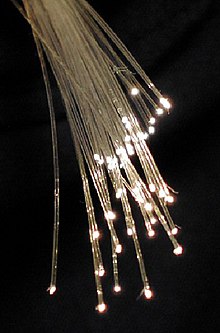It's pretty obvious why we have fingerprints—the tiny friction ridges on the ends of our fingers and thumbs make it easier to grip things. By making our fingers rougher, these ridges increase the force of friction between our hands and the objects we hold, making it harder to drop things. You have fingerprints even before you're born. In fact, fingerprints are completely formed by the time you're seven months old in the womb. Unless you have accidents with your hands, your fingerprints remain the same throughout your life.
In future, it will be much more common to have to confirm your identity with biometric information: either your fingerprint, a scan of the iris or retina in your eye, or a scan of your face. Already, some laptop computers have built-in fingerprint recognition scanners to make them more secure. Soon we could be seeing these scanners on ATMs and cellphones in airport security scanners, on checkouts in grocery stores, and perhaps even replacing the keys in our automobiles!
Types of scanner
There are two main ways of scanning fingers. An optical scanner works by shining a bright light over your fingerprint and taking what is effectively a digital photograph. If you've ever photocopied your hand (ummm I have tried it and yes you can too ;-P ), you'll know exactly how this works. Instead of producing a dirty black photocopy, the image feeds into a computer scanner.
The scanner uses a light-sensitive chip called a CCD (charge-coupled device) to produce a digital image. The computer analyses the image automatically, selecting just the fingerprint, and then uses sophisticated pattern-matching software to turn it into a code.
Another type of scanner, known as a capacitive scanner(used in phones and are faster methods of scanning), measures your finger electrically. When your finger rests on a surface, the ridges in your fingerprints touch the surface while the hollows between the ridges stand slightly clear of it. In other words, there are varying distances between each part of your finger and the surface below. A capacitive scanner builds up a picture of your fingerprint by measuring these distances. Scanners like this are a bit like the touchscreen on things like iPhones and iPads.
Few years before fingerprint scanners were awesome and rare and something hiFi . But now with all the new technology it has become common and we are using it for security purposes in our phones !!
Ahhhh that old days when I used to ask the tech guy to show me how does that fingerprint scanner worked at his office
(Want to know more about touchscreen ?
View my earlier posts in this blog)






















 To understand how a fiber optic cable works, imagine an immensely long drinking straw or flexible plastic pipe. For example, imagine a pipe that is several miles long. Now imagine that the inside surface of the pipe has been coated with a perfect mirror. Now imagine that you are looking into one end of the pipe. Several miles away at the other end, a friend turns on a flashlight and shines it into the pipe. Because the interior of the pipe is a perfect mirror, the flashlight's light will reflect off the sides of the pipe (even though the pipe may curve and twist) and you will see it at the other end. If your friend were to turn the flashlight on and off in a morse code fashion, your friend could communicate with you through the pipe. That is the essence of a fiber optic cable.
To understand how a fiber optic cable works, imagine an immensely long drinking straw or flexible plastic pipe. For example, imagine a pipe that is several miles long. Now imagine that the inside surface of the pipe has been coated with a perfect mirror. Now imagine that you are looking into one end of the pipe. Several miles away at the other end, a friend turns on a flashlight and shines it into the pipe. Because the interior of the pipe is a perfect mirror, the flashlight's light will reflect off the sides of the pipe (even though the pipe may curve and twist) and you will see it at the other end. If your friend were to turn the flashlight on and off in a morse code fashion, your friend could communicate with you through the pipe. That is the essence of a fiber optic cable.









